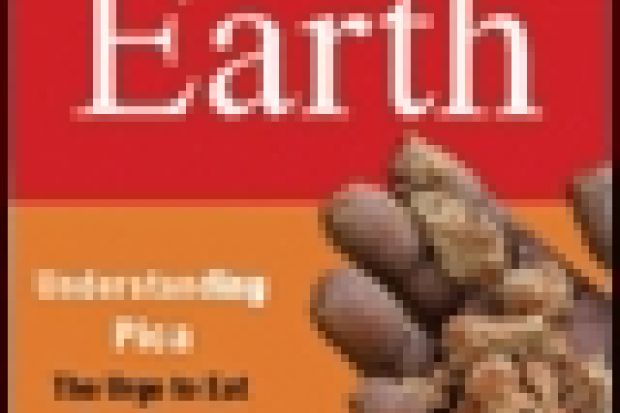Hundreds of thousands of people, maybe more, practise it every day, in every continent of the inhabitable world. Archaeologists believe it was practised by our prehistoric forefathers. Eating clay and other apparently non-nutritional substances (usually starch, ice and chalk) is not a rare phenomenon, to be sensationalised when encountered, but a deep-rooted, global behaviour. Far from extraordinary, it is an everyday, ubiquitous occurrence.
Yet nutritionists often fail to take its existence into account, or even to suspect its practice. Given the potential health consequences of this kind of consumption, why do relevant professionals often neglect to chart its nature or popularity?
Part of the reason is its bad image. The rural poor in industrialised states know they are looked down on by visiting experts. Moreover, they are often denigrated by their better-off neighbours as "dirt-eaters", "sand-lappers" and the like, so they shut up about it. Villagers in less-developed countries may munch on a bit of clay or lump of starch in odd, quiet moments and not even think it worth mentioning to any enquiring incomer. Another part of the reason is that some nutritionists are not taught to look for it. The result is that its incidence is most likely gravely under-reported, and its study patchy.
Sera Young, a biological anthropologist assisted by a team of Cornell University colleagues, wants to correct this ignorance. Her slim book is a concise, critical summary of what we do and don't know about eating earth, grounded in an exhaustive search for relevant literature and her own fieldwork in Zanzibar.
A study such as this has to be very broadly interdisciplinary. When, for instance, was the last time you saw a book by an anthropologist acknowledging the important assistance of experts in soil science, food science, parasitology, statistics, Afro-American religions, waste management and American folklore?
In a painstaking, methodical manner, Young sifts through each of the common hypotheses about craving earth, dispelling several of the more popular ones along the way. She finds that consuming clay and the like is not due to hunger, and is unlikely to contribute micronutrients to the diet. Indeed, it may cause micronutrient deficiencies. However, this alimentary behaviour may well be in part adaptive, protecting consumers from some pathogens and detoxifying some harmful chemicals. Perhaps this is why some primates and other animals have been observed eating clay.
There is still a long list of what we do not know. Young sees the identification of a physiological mechanism by which this phenomenon occurs as a major step in evaluating current explanations. Also, we know little about the distribution of earth-eating within an entire community. We can only hint at its evolutionary origins until we learn more about why certain animals prefer some soils over others and whether they would be willing to ingest other substances, for example charcoal or starch. Our knowledge of the functional consequences of this consumption is scant. Satisfying these cravings might affect health problems that consumers are unaware of; it may prevent miscarriage. More than that we cannot say, as yet.
As a social anthropologist, I was particularly fascinated by the section on cravings themselves. Young's choice of historical quotes, from Jamaica, England and India, plus others from dedicated websites, strikingly demonstrate how powerful a passion the craving for earth and other substances can be. Perhaps a future study could make more of this, putting these cravings into their respective cultural contexts. Within a studied community, do others crave other substances, and, more generally, how are cravings regarded and differentiated by its members?
These cravings and their consequences are important topics to study in themselves. But, as behaviours that so clearly cross biocultural divides, their investigation is an exemplary way "to study what it means to be us".
Craving Earth: Understanding Pica - The Urge to Eat Clay, Starch, Ice and Chalk
By Sera L. Young
Columbia University Press 240pp, £19.50
ISBN 9780231146081
Published 18 March 2011
Register to continue
Why register?
- Registration is free and only takes a moment
- Once registered, you can read 3 articles a month
- Sign up for our newsletter
Subscribe
Or subscribe for unlimited access to:
- Unlimited access to news, views, insights & reviews
- Digital editions
- Digital access to THE’s university and college rankings analysis
Already registered or a current subscriber?
